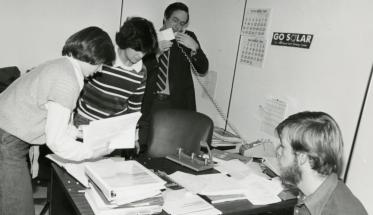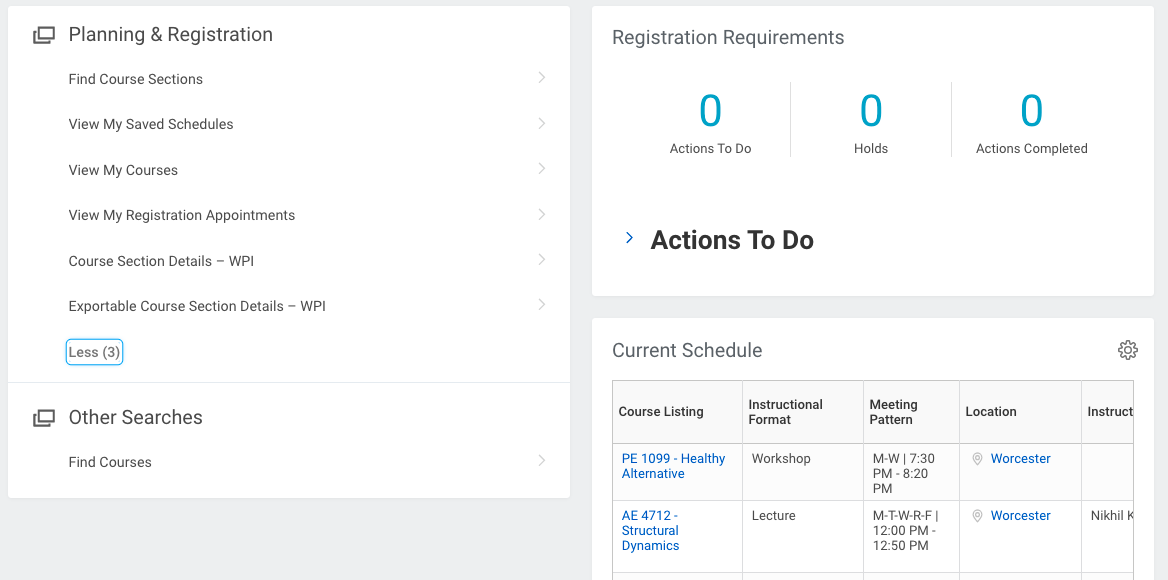In part one (October 1996), we told of the birth of The WPI Plan and of the nine remarkable men who crafted an educational program destined to turn the Institute upside down. The Plan was an elegant blueprint. Turning that vision into a working program took years, and a massive community effort. Along the way, there were errors committed, opportunities missed, and sacrifices made.
The Plan today remains a shining example of higher education at its best. But is it all it can be? And, as the millennium approaches, has the time come to look carefully at this bold experiment, and, perhaps, to plot a new direction for WPI just as revolutionary?
On April 15, 1986, readers of Newspeak were confronted with an editorial that began, "WPI is not the college it says it is, and hasn't been for some time," and ended with the stern declaration, "...what was once an outstanding example that idealism can work in the real world is now an ironic mockery, an empty symbol of a school that once prided itself on being different. That school is now being steered unswervingly toward lockstep conformity."
The frustration and anger in that editorial were the products of two years that saw the most sweeping changes to befall the WPI Plan since the university's groundbreaking undergraduate program was approved by the faculty in 1970.

Those changes began when the faculty voted to allow individual academic departments to require their majors to complete a set of distribution requirements. It continued with a new grading system that veered away from the simple system the Plan began with. It included the creation of a requirement that all undergraduates take two courses in the social sciences. It ended on April 10, 1986, when the faculty approved a motion declaring that the Competency Examination, one of the Plan's original degree requirements, would no longer apply to students who entered after May 1984.
The writer of the Newspeak editorial was not the first person to take the pulse of the Plan and declare it dead, and he would not be the last. In fact, there have been those who have, since the Plan's beginnings, claimed that it never really did exist, at least not in the ideal form envisioned by the faculty Planning Committee that created it. At the other extreme are those who believe that the essence of the Plan is a philosophy - a way of thinking about education - that could flourish even without any of the Plan's degree requirements.
The truth is, of course, more complex. The WPI Plan has been, from the start, an educational program in continual flux. The elements that make up the program today did not spring into existence all at once, nor is the Competency Exam the only component of the original Plan that is no longer in place. Indeed, nearly three decades after its creation, the Plan remains a work in progress.
The vision crafted by the Planning Committee and amended and approved by the faculty was painted in broad strokes. Filling in the details and creating a program that could educate young men and women in a manner worthy of culminating in a degree from WPI took the combined energy, imagination and commitment of hundreds of people. One of these was President George Hazzard, who came to WPI just as the Plan was taking shape and lent his enthusiasm, his own passion for educational innovation, and his unsurpassed skill as a fund-raiser. He was largely responsible for major grants from the Rockefeller and Carnegie foundations that provided funds - with few strings attached - that helped fuel the implementation process, and he helped win recognition for the Plan in the national media and among WPI's peers in higher education.
Like Hazzard, Ray Bolz, who came to WPI in 1973 to replace M. Lawrence "Cookie" Price as dean of academic affairs, was drawn to the Institute by the opportunity to take part in a bold experiment in engineering education. Having made his mark at Case Western University, where he served as dean of engineering, Bolz set to work recruiting talented faculty members for WPI who had the flexibility and vision to adapt to the Plan's unconventional format. Before he retired in 1984, he had hired more than half the WPI faculty.
Bolz worked closely with William Grogan '46, longtime electrical engineering faculty member, member of the Planning Committee, and newly appointed dean of undergraduate studies. Grogan headed a core group of faculty members and administrators who implemented the Plan. Radiating out from this central structure were many subcommittees that addressed various elements of the Plan, faculty committees that helped shape many key aspects of the Plan and shepherd them through the faculty governance system, and administrative offices established to manage the myriad details of this unique academic program.
Beyond these bodies were the entire faculty, staff and student body, for the Plan was an all-consuming entity. In a 1974 article in the WPI Journal, Hazzard said the Plan "is the faculty working 80 to 100 hours a week. It is the administrators doing likewise. It is tension, skepticism, exhilaration, frustration, incredible detail, patience, and hope."
The story of the WPI Plan is one of the more remarkable tales in the annals of academia. And so far, it is a story without an ending.
"An opportunity and challenge seldom presented to any faculty or administration."
The glow of the victory party at Putnam and Thurston's Restaurant had hardly died away in the spring of 1970 when the cold light of reality began to dawn. The faculty vote had committed the Institute to carry out a gargantuan task. To implement the Plan, WPI would have to throw away virtually every critical element of its undergraduate program - the academic calendar, the grading system, the degree requirements - and replace them with a largely undefined system.
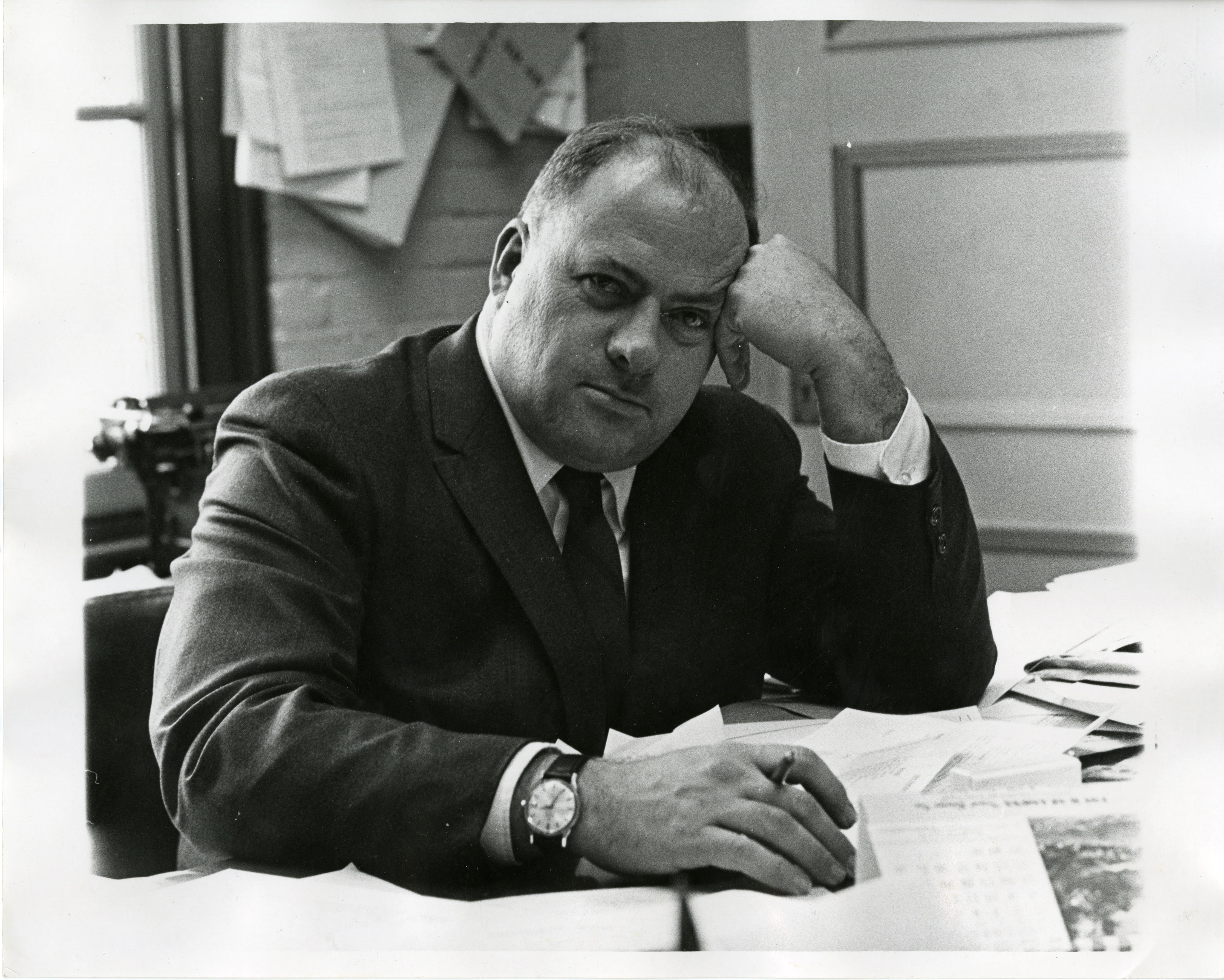
It was a breathtaking leap of faith - and an enormous risk. But the risk of doing nothing was higher. Between 1964 and 1968, WPI's entering freshman classes averaged fewer than 400 students. In 1968, WPI admitted 850 of the 1,400 students who applied, and enrolled just 350. Maintaining the school's rigid academic program - at a time when educational reform was blossoming around the country and when the Vietnam War, the growing environmental movement and student unrest had led to a severe decline in interest in engineering careers - promised little hope of reversing the decline in WPI's student population and, by association, the Institute's troubling financial outlook.
So while the Plan was a means of creating a more appropriate vehicle for educating technological professionals, it was also a life ring to keep the Institute afloat in a sea of fiscal uncertainty. And since life rings do no good if tossed too late, the Plan had to be put in place swiftly. Recognizing that urgency, Hazzard sent the faculty a memo on Oct. 19, 1970, outlining an ambitious timeline for implementing the Plan. It called for a pioneering group of freshmen and upperclass students to begin completing their degree requirements under the Plan in 1971. The Plan's first major component - Intersession - would go on-line midway through the 1971-72 academic year.
Hazzard named Grogan chairman of the General Implementation Committee, consisting of a select group of administrative officers, the chairmen of the faculty committees responsible for the curriculum and campus social life, and the chairman of the faculty Curriculum Committee. Assisting the General Implementation Committee would be five ad hoc committees comprising more than 50 faculty members and students. They would focus on the implementation of student projects and independent studies, on Intersession, on the advising system, on facilities and equipment needed for the new curriculum, and on the role of audiovisual technology in the Plan. In a separate memo to the members of those committees, Hazzard wrote, "We currently face an opportunity and challenge seldom presented to any faculty or administration. I need your wholehearted support and effort in implementing the Plan successfully."
"It was a period of enormous tension."
When the General Implementation Committee met for the first time in the fall of 1970, there were a great many questions on the table and not many answers. Over the next 15 years, the committee would dispose of nearly all of them in a swift, no-nonsense manner. Meeting weekly, the committee marched briskly through succinctly worded agendas under Grogan's leadership.
"Bill Grogan was the orchestrator," says Joseph Mielinski '63, now finance director for the Leominster, Mass., Public Schools, who was hired by WPI in 1970 to administer the evolving project program. "It was Bill's wisdom that kept things in balance and that let us keep everything in perspective." Says James Demetry, professor and associate head of the Electrical and Computer Engineering Department, "It is impossible to overstate Bill Grogan's contribution to the success of the Plan. He went about leading the implementation with incredible dedication and resourcefulness that, even today, instills loyalty."
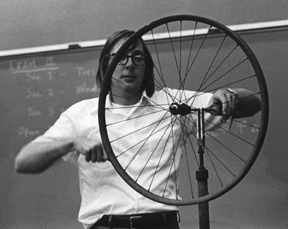
The most frightening question the General Implementation Committee faced was whether the Plan would work at all. Given that the school's future was riding on the program and given the large number of faculty members who were dead set against it, this was not an idle worry, Grogan says. "Some days you wondered if it would go, but you couldn't let anybody know that. You couldn't transmit even the slightest doubt, because there were a lot of people who wanted it to go away. They weren't going to leave WPI, but they really wanted things to go back to the way they had been. We had to get across the idea that WPI was never again going to be the way it was."
High on the General Implementation Committee's list of priorities in those early days were two changes that would prove ideal vehicles for sending that message: seven-week terms and Intersession. The switch to seven-week terms was a trying process - "a major jolt to the system," Grogan calls it. As chairman of the Curriculum Committee, Thomas Keil, now head of the Physics Department, was responsible for making sure the changeover went smoothly.
"We made the switch to seven-week terms in the fall of 1972 - even before the Plan was fully implemented - a time when most students were still meeting their degree requirements under the old system," Keil says. "There was simply no way we could run seven-week terms for Plan students and 14-week semesters for everybody else. So in a short period of time, we had to rewrite every course description and, at the same time, eliminate courses and add new courses required by the Plan. It was a major milestone. I think it was really a stroke of genius to do this so soon. It made it clear that the Plan was going to have a major impact, one that would affect everybody."
"We had to rewrite every course description, eliminate courses, and add new courses required by the Plan. It was a major milestone." - Thomas Keil
The Planning Committee had called for a calendar based on terms in the belief that such a system was essential for the success of an academic program that revolved around projects. "There were really two reasons," Grogan says. "A lot of students said the semester system, which required students to take five or six concurrent courses, so divided their attention they felt they really could not get into anything. They were always putting out fires.
"In addition, I had learned through my own courses that if you tried to run serious projects in competition with five or six courses - with all of the deadlines they heaped on students - the projects suffered. And that says nothing of trying to get students off-campus to do project work."
Grogan says students liked seven-week terms from the start, but the reviews from the faculty were mixed, at best. Some instructors found the process of revamping courses easier than others. The process seemed most trying for courses in the sciences and mathematics. "The math faculty constantly tried to convince the university to go back to semesters," Grogan says. "They had their reasons. They felt students could not effectively learn mathematics in seven-week bites."
The first experience with seven-week terms was the most difficult, Grogan says. "At the end of that first term, people really freaked out. They couldn't believe the term was over. Romeo Moruzzi, who was then acting dean of the faculty, had a cocktail party for the faculty at Higgins House. It was one of the wildest times we ever had. The faculty were absolutely beside themselves. It was a period of enormous tension."
Seven-week terms remain one of the more controversial elements of the Plan. Francis Lutz, former dean of undergraduate studies at WPI who is now dean of the School of Science, Technology and Engineering at Monmouth University, says one problem is that each academic year brings to campus a new crop of young faculty who have only had experience with teaching in semesters, and they find adjusting to a term system difficult. "There is a need for continuing effort on the part of senior faculty and the administration to educate these faculty members on the reasons for the seven-week term system."
But opposition to the system is not limited to new professors. Keil says he is one of a number of veteran faculty members who would support a return to the semester system. "There are major disadvantages to seven-week terms," he says. "There are a lot of things that students find difficult to absorb over such a short period of time. And the logistics of registering students four times a year is a nightmare - we're always starting or stopping courses, and there is a cost to us for that. It is argued that seven-week terms make it possible for students to complete projects off-campus, but I feel that our off-campus project program is limited by seven-week terms. I'd like to see students spend a semester at a project center. They'd have time to complete a project plus a lot more time to deal with cross-cultural issues, language issues and so on."
Still, Keil says he recognizes that such a change is unlikely. "We were able to switch to seven-week terms because the faculty wasn't as busy as it is today. Now, with teaching and project advising, there isn't a lot of excess capacity - everybody is pretty much flat out. One of the elements of the theory of change is that the people who are going to make change have to have the time to do it, and we don't."
"Everyone was teaching something. It was extraordinarily successful." f the introduction of seven-week terms was received by the faculty like a dose of castor oil, the first Intersession was an extra large Whitman's Sampler. Designed as a three-week academic interlude between B and C terms, Intersession quickly exploded into a smorgasbord of knowledge. Anyone with expertise in a particular area - no matter how narrow or off-beat - could offer a course that might last a few days to a few weeks, and many, many people did just that.
The catalog for the first Intersession in January 1972 included listings for more than 400 courses, with titles that included "Fiction Into Films," "Living in a Commune," "Design and Testing of M.F. Directional Antenna Arrays," "Bachelor Cooking: Survival to Gourmet," "Skiing for Beginners," "Biomedical Instrumentation With Computer Applications," and "The Tudor Interlude" (a performance of a 16th century comic play). Students traveled to the White Mountains for a course in winter mountaineering, others took an oceanographic research cruise in the Caribbean, some went to Puerto Rico to study geology. "Everyone was teaching something," Grogan says. "It was extraordinarily successful."
Defying the predictions of those who said students would rather spend the winter break in the tropical sun than in a classroom, the courses drew some 4,000 registrations. More than 70 percent of all undergraduates signed up, along with many faculty, staff and alumni. There were a number of goals for this academic free-for-all, Grogan says. "The idea was to let members of the WPI community try new things, to enable faculty members and students to get to know each other in new combinations, and to give students an opportunity to pick up useful ancillary material they could use in their courses and projects."
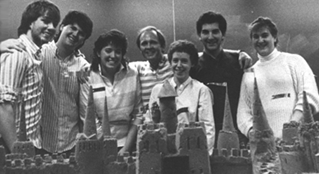
Raymond Hagglund, professor of mechanical engineering, was an early and eager supporter of Intersession. "I offered a week of free-body diagrams," he says. "These are one of the most critical things in engineering - if you can't draw them, you can't do engineering. By the end of that week, students were masters."
With fellow mechanical engineering professor Hartley Grandin, Hagglund also offered a course on building a house. "Students actually built walls, did the wiring and plumbing, and so on. Three hundred kids signed up for that course the first time, even though I could only handle 30. Some of these kids had never used a hammer or sweated a joint or put in a light switch. Now, I happen to think these are important things to know. They add a practical element to engineering."
Feedback from participants showed that the program was meeting its objectives. Students reported that they were learning skills and techniques that would prove valuable in their studies. The informal atmosphere in the courses was helping break down the campus's ivory towers. And, perhaps most important, everyone was having fun breaking free in a spectacular fashion from the rigidity that had been the norm in WPI's undergraduate program for many years.
Like a dazzling flower that blooms briefly but then must die so the fruit can mature, Intersession eventually gave way to the growing demands of other Plan elements, most notably the Competency Examination. "January was the big month for taking the Comp," Grogan says, "and it fell right on top of Intersession."
After several years of declining enrollment, the General Implementation Committee put an end to Intersession in 1982. But for those who lived through it, the program remains one of the most exciting and unusual diversions in WPI's long history.
"Projects breed projects."
If all the problems Grogan expected to face in bringing the Plan on-line, none loomed larger than the challenge of finding enough topics to ensure that all WPI undergraduates could eventually complete the Plan's three project-based degree requirements.
"A number of faculty members had incorporated projects in their courses," Grogan says, "and there were projects done as independent studies and honors theses. We were running perhaps 60 projects a year. I remember waking up at 4 a.m. some days in a cold sweat thinking, 'My God, in a year or two we'll have to have 1,200 project registrations. Where are we going to find them?' We were worried that it would be an exercise in frustration for students, but an even greater worry was that the projects would be trivial. As it turned out, this was not a problem. Projects breed projects."
Grogan says WPI alumni helped prime the project pump. "Not all alumni thought the Plan was such a good idea," he says. "Some thought this was a wild scheme, one that seemed to disparage their own educations. Others bought into the Plan with great enthusiasm. They recognized how this program would have enhanced their educations. These were the graduates we went to as we searched for project ideas and support. Before long we had an embarrassment of riches - file drawers full of letters from alumni wanting to do projects with us. Alumni may not realize it, but in those early days of the Plan, they played a critical role in making it all happen."
Finding project topics was only one element of bringing the project program into existence. Administering a program of that magnitude was something no one had ever tried to do. There were no rules, no procedures, and no infrastructure to manage such an effort. And there was little time to get everything in place. The first group of Plan students would need to be working on projects during the 1971-72 academic year, and each year the program would grow until it reached an all-out steady state in 1973-74.
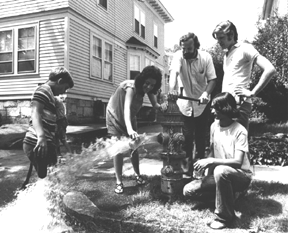
By a fortunate coincidence, WPI had received a $200,000, three-year grant from the Alfred P. Sloan Foundation in 1969 to create a program that would prove to be an excellent test bed for WPI Plan projects and for faculty project advising. The grant funded the Environmental Systems Study Program (ESSP), a new method for teaching future engineers and scientists to approach the solution of environmental problems in an interdisciplinary fashion. Imre Zwiebel, then a professor of chemical engineering at WPI and now a professor in the Department of Chemical, Biomedical and Materials Engineering at Arizona State University, applied for the grant through a special foundation program that funded innovation in technological education.
"Everything seemed to mesh at that time," Zwiebel says. "The Plan was coming together and we felt we had a novel educational approach to present to Sloan. We were also combining technology and society through the study of the environment, which was innovative. Sloan made just 10 awards through this program, and we were the only small school to get one."
Through the ESSP, students completed environmental projects sponsored by local companies during the summer. For example, one team of students solved a noise problem at a local chemical company while another looked at the problems caused by the discharge of sewage treatment sludge into Boston harbor. Though the projects were highly technical in nature, they helped students understand the broader social implications of engineering and technology. In this way, ESSP became the springboard for a major effort to define what would become the most distinctive and powerful element of the Plan.
"The need for the IQP became clear as day."
As it was drafted by the Planning Committee and approved by the faculty, the WPI Plan contained a substantial loophole. Among the handful of degree requirements included in the Plan were two qualifying projects: one that had to be concentrated in a student's major discipline (now called the Major Qualifying Project) and another that, it was recommended, should be in an area that touches upon the relationship between science, technology and society.
In the early days of the Plan, many faculty members and students were eager to take advantage of the leeway this description provided. Many on the faculty believed strongly that, since the practice of engineering and science in our modern world is intimately intertwined with social issues and concerns, all students should undertake a science, technology, society project. But others believed that the best route to proficiency in a technical field is practical experience, and the more the better; if one qualifying project in the major area was good, two would be twice as good.
"The idea that the second qualifying project should be a technical project had a lot of support on campus," Lutz says. "The notion of an interactive project was really something new for technical higher education at that time - as was the thought of devoting so much academic credit to something that was so ill-defined."
Giving definition to the science, technology and society project was the charge of an interdisciplinary committee appointed in 1971 by Grogan and chaired by Zwiebel. Its members included some of the faculty who had gained experience in project advising through the ESSP, including Demetry, Hagglund and Lutz, as well as Leon Graubard, professor of management, John O'Connor, professor of social science and policy studies, and Douglas Woods, head of the Social Science and Policy Studies Department and recently-named co-chair of the Interdisciplinary and Global Studies Division.
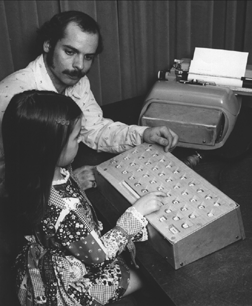
"The IQP is the single most important contribution WPI has made to technological education - it is WPI's defining characteristic." - Francis Lutz
Much like the Planning Committee, the Zwiebel Committee (as the group came to be known) went about its work with remarkable dedication and energy, fueled by each member's abiding interest in education. And like the members of the Planning Committee, the Zwiebel Committee members found the experience exhilarating and profoundly moving.
Says Zwiebel, "We spent a great deal of time together. We exchanged ideas. We worked on one another. We became very close friends - we became one. That camaraderie and support was the key to the planning and development of the IQP. I think we showed that if people are truly given the opportunity to develop something - look what they can do."
For the better part of a year, the committee met almost weekly in a room in the back of Alden Memorial. There they debated concepts and ideas, drafted and redrafted sections of their report, and bit by bit, crafted not only a definition of the interdisciplinary project, but a finely wrought and well-reasoned exploration of the philosophy behind the project. The committee was also the group that gave the project its name: the Interactive Qualifying Project, or IQP.
"I think many people at WPI recognized that there was something missing in the education of engineers and scientists," Zwiebel remembers. "There was a lot of emphasis on pollution then - we had seminars, Earth Day observances, and so on - so there was a consciousness about the social consequences of technology. But unfortunately, there was a feeling that we didn't know what to do about those consequences. Thinking of things this way, the need for the IQP became clear as day."
The committee recommended that the IQP become the second qualifying project and that all students be required to complete it. By doing so, they wrote in their report, students would become sensitive to social problems, be able to question, criticize or reinforce prevailing ethics and values, be aware of societal-humanistic-technological interactions, and be able to make better judgments and policy recommendations on issues that affect society. In short, they would become better scientists and engineers.
Having fulfilled its charge, the committee could have filed its report and ended the arduous project it had taken on. But it recognized that a project as unusual as the IQP - one whose focus fell outside the spheres of expertise and the comfort zones of most WPI faculty members, and one for which, in all likelihood, faculty members would receive little or no credit toward the rewards of tenure and promotion - would require a great deal in the way of institutional support. Demetry has compared the IQP to a ball sitting at the peak of a steep hill. "It's not a naturally stable situation," he says. "You have to work to keep that ball up there or it's going to roll back down. It's a tenuous stability, at best."
The committee proposed a two-pronged approach to supporting the project. On one prong, the committee recommended that preparation courses be developed to acquaint students with socio-technical interrelationships and to teach them techniques for designing studies and surveys. They also strongly recommended that all students complete a preliminary project - a sort of trial run to explore a topic and lay the groundwork for the full-blown IQP - and that students be required to defend their project ideas to advisors in the form of proposals.
"We wanted to be sure that this project did not become a superficial exercise," Zwiebel says. "We wanted this effort to lead to a publishable result. That was the key to the whole thing. We were looking for a way to be sure that the bond between the technological component and the societal component was meaningful. Preparation was the key to preventing superficiality."
Faculty development, the other prong, was of equal - if not greater - importance, the committee believed. Among the group's recommendations was one for on-campus sabbaticals that would enable faculty members to learn about social problems and issues that could become fodder for projects. "The on-campus sabbatical was to be a way to learn about disciplines outside of one's own area in a cost-effective way," Zwiebel says. "The committee felt there was something quite potent in that."
Many of the committee's recommendations were never implemented. But other efforts were made to prepare the way for the IQP. One of the products of the Zwiebel Committee was a proposal to the Sloan Foundation that resulted in a large grant that supported two summer workshops for faculty interested in advising IQPs. As the first director of the IQP program, Hagglund organized the first workshop in 1972. The second was organized the following summer by Demetry, who in 1975 became the first chairman of the Division of Interdisciplinary Affairs, which was set up to nurture the IQP and to oversee the interdisciplinary majors made possible by the flexibility of the Plan.
The workshops brought WPI faculty members together with groups of recognized authorities on a wide range of social issues. "These were people who, in the 1950s and 1960s, would have seemed out of place at WPI," Demetry says. "But they exposed the faculty to issues that were totally out of the conventional engineering framework. They didn't make experts of us, but they made us aware of the problems that were out there. I think the workshops also made believers out of a number of skeptics on the faculty. After they were over, we had a lot of people willing to take on a share of the burden of advising IQPs."
With the Zwiebel Committee report and the Sloan-sponsored workshops, the IQP got off to a good start. But the General Implementation Committee felt the need to carefully time its proposal to make the project a formal degree requirement. "It was a political decision," Grogan says. "We waited until we were well into the Plan and had many people who were committed to the IQP. Then, a ground swell of support for abolishing the project arose in the Chemistry Department, and we knew the time had come to move. If we had waited another year, we might have lost the momentum."
The year was 1977. That spring, the Committee on Academic Policy brought the issue before the faculty for a vote. By that time, only a handful of students were completing two technical projects. Still, a number of faculty members rose to strongly oppose the removal of the option to do a second MQP. But by a voice vote the faculty approved the new degree requirement, which would first apply to students graduating in 1981 - more than 10 years after the Plan's approval.
"WPI Fumbled the Ball"
Since the creation of the IQP, the ball has remained on top of the hill, though at times it has threatened to give in to the relentless tug of gravity. "The IQP is the single most important contribution WPI has made to technological education - it is WPI's defining characteristic," Lutz says. "But precisely because it is so different from anything in any other curriculum around the country, it requires occasional evaluation to assure that, though it is different, it is still substantial."
In fact, periodic faculty reviews have identified and helped address a number of problems with the implementation of the project, most especially that of IQPs that are really technical projects (MQPs) and projects that are not worthy of college level work. But other problems persist. Last fall, the Interdisciplinary and Global Studies Division sponsored a retreat for 60 faculty and staff members to review the plusses and minuses of the IQP and to make plans for its future. A subset of that group continued to work during the winter and recently produced a final report.
The report, written by Douglas Woods, noted that the most vexing problems facing the IQP are precisely those that the Zwiebel Committee hoped to avoid by placing so much emphasis on student and faculty preparation. In particular, a 1995 review of IQP quality showed that while projects completed off campus were generally excellent, about a third of projects done on campus involve too little work or work of insufficient quality to receive credit as a degree requirement. In addition, some projects demonstrate a lack of understanding of the methods of conducting social science research and analyzing data.
The report recommended that ways be found to increase understanding among students and faculty members about the goals of the IQP and that an IQP manual be prepared that will provide faculty members with the information they need to be effective advisors. It recommended that students be encouraged to do more preparation for projects, including more course work relating to their project topic. And it suggested that on-campus IQPs become more like their off-campus counterparts. In particular, more on-campus projects should be sponsored by local and regional agencies and organizations, they said.
WPI also recently bolstered its administration of the IQP by dividing the responsibilities of the IGSD among three co-chairs. Current IGSD chair Hossein Hakim, professor of electrical and computer engineering, will continue to direct WPI's Global Perspective Program and support IQPs completed at off-campus sites. Douglas Woods will direct the new Interdisciplinary Studies Program, which will support IQPs completed on or near campus. Richard Vaz, associate professor of electrical and computer engineering, will become director of faculty and student development programs and provide support to these two critical areas.
But even as WPI works to increase its commitment to the IQP, the chairman of the committee that defined it more than two decades ago wonders whether the effort may be too little, too late to garner WPI the national recognition and respect he feels the project could have won the university. "During the next few years, as WPI devotes its total effort to the Plan, it will become an educational laboratory," the Zwiebel Committee wrote in its report. "WPI's progress in implementing this innovative program will be carefully observed by other educators as well as by industrial and governmental employees. It is highly probable, therefore, that the successful features of the WPI Plan will exert considerable influence on the programs of many universities, and on the general course of higher education in the years to come."
"WPI fumbled the ball," Zwiebel says now. "I felt that WPI had invented something great and should have devoted considerable resources to enable it to grow. Now, the rest of the world is catching up to WPI, but if it had invested its resources in the IQP, it could have become a national leader in the interface of science and technology. I don't think WPI believed in the potential value of the IQP from an administrative point of view. It was accepted as an educational tool, but not for its potential to build national and international prominence. It's never too late to get started toward that goal, but the university must be willing to put its resources into it and place its focus on it. It must be willing to make the commitment."
"I don't think we should hold anything above inspection."
In the process of implementing the Sufficiency, the project that greatly increased the role of the humanities in the education of WPI undergraduates, WPI created a new department. Prior to the start of the Plan, the humanities had been the province of two departments, each with its own faculty and department head. In 1974, the English Department, then chaired by Charles Heventhal, a member of the Planning Committee, and the Department of History, Modern Languages, Music and Art, under the chairmanship of Donald Johnson, combined to become the Humanities Department (today known as the Humanities and Arts Department), with Johnson serving as its first head.
"Because of the urgency of getting ready for the Sufficiency, the transition had to come quickly," Heventhal says. "We defined a three-year program to make it happen. It took a lot of hard work and sacrifice, but I'm proud of what we did in reorganization of the humanities and in the development of the drama/theater and music areas."
The move was aimed at helping create an academic infrastructure adequate to nurture and sustain the Sufficiency project. Prior to the Plan, humanities courses had been offered primarily to enable students to fulfill the few nontechnical electives available in a typical four-year academic schedule and to fulfill the criteria of the national engineering accreditation agency that required students to take a half year of humanities and social science courses. The Sufficiency requires each student to take five thematically related courses and then complete a project that somehow grows from those courses. It was clear that this level of involvement in the humanities would require more resources than WPI could muster as the Plan began.
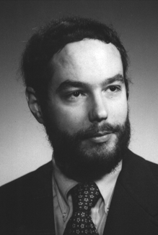
Those resources would include more faculty members to teach the courses students needed as they explored a wide variety of topics in the humanities and arts. To help in this area, WPI secured a $30,000 grant from the National Endowment for the Humanities to look at the needs of the humanities program; a second NEH grant of $180,000 was used to hire two new faculty members and to cover the cost of course development and library acquisitions. WPI also provided funds to expand the humanities faculty in the early years of the Plan and the Mellon Foundation assisted in faculty and program development.
Lance Schachterle, now a professor of English and assistant provost for academic affairs, was one of those new recruits. Arriving on campus in the fall of 1970, he said he joined the rest of the humanities faculty in trying to make sense of the Sufficiency. "There was a fair amount of disagreement among the various humanities disciplines about what it meant to do a cumulative project," he says. "We also had to decide what it meant for courses to have a thematic connection. No one had an answer for this at the start. We also had a host of very practical questions to answer. For example, to what extent should students borrow or build on the content of the courses and to what extent could they write something completely new that has no relationship to the courses?"
Like the IQP, the Sufficiency has been the subject of periodic reviews that have identified and helped solve problems that have plagued it. These reviews have also helped the Humanities and Arts Department wrestle with the goals and expectations it has for the Sufficiency. Grogan and others say the time may have come for a more comprehensive review that will enable the university to look more closely at the project and at whether it continues to meet the goals that the Planning Committee set for it.
"I'm not sure it is doing its intended job any more," Grogan says. "Students now seem to take humanities courses that fit their schedules, rather than courses that fit with a theme. And I'm not sure the project is giving students a sufficient base in an area of the humanities to carry on an avocational interest. As we look at the Plan and review its degree requirements, I don't think we should hold anything above inspection, including the Sufficiency."
"We were all there as a team. And that's critical."
While most of the story of the WPI Plan revolves around pedagogy, there have also been some important issues of geography. In the first few years, the most important of these was finding a physical home on campus for the new project programs. The minutes of the General Implementation Committee reflect considerable discussion about where to create the Project Center and what to house under its roof.
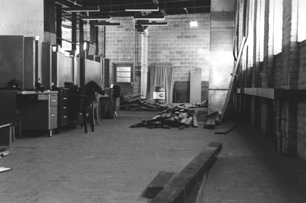
The "where" question was answered by refurbishing the foundry building on West Street with the help of a $150,000 grant from The Kresge Foundation. The "what" took a bit longer to sort out. As originally conceived, the Project Center was to be a sort of machine shop where students could build equipment for their projects. When it became apparent that most of this work could be done in existing labs and shops, the center became, instead, the home for the people and programs needed to administer the Plan, a role it continues to fill today.
After the IQP had been defined, it was agreed that this innovative, interdisciplinary project needed a home base of its own. "I was informed one day that the college was going to renovate a little room for me on the third floor of Washburn," Hagglund says. "The third floor was then an attic and it had become a real dump. I said, 'My gracious, what a wonderful place this is going to be! Who will ever come up here? I don't want to be up here.'"
Hagglund, borrowing on his own home building experience, worked out a plan to renovate the entire floor for the same $25,000 that had been set aside to create his office, and volunteered to serve as general contractor. He secured Grogan's approval, and one Saturday morning arrived at Washburn with a wrecking crew that included Mielinski, Demetry, Lutz and a horde of students. "That weekend, we gutted the third floor," Hagglund says. "Then on Monday, there was a union grievance filed against me. We solved that problem by hiring union craftsmen from the Plant Services Department on an overtime basis, providing they were willing to work with students. It worked out great."
Hagglund contained costs by using volunteer workers and by finding used or unconventional building materials whenever possible. When a downtown Worcester company decided to get rid of some 13-foot-tall computer walls, he bought them for a tiny fraction of their value and used cables to lower them out of a 10th floor window into a WPI dump truck. Needing walls for student study carrels, he found some inexpensive toilet stall partitions that worked fine. "We built ourselves a home," he says. "It was a place where we could bring together all the faculty who were running the project program, the faculty who were advising projects, and the students. We were all there as a team, and that's critical."
According to Hagglund and others, the IQP Center may well be the place where another crucial piece of Plan geography got its start. In 1972, WPI received a $733,400 grant from the National Science Foundation to help with the implementation of the Plan. Augmenting the $1.1 million WPI had already committed to the Plan implementation, the grant included $65,000 to establish an off-campus residential center for student project work. In the early days of the Plan, project center arrangements were developed that enabled students to do projects on-site with local corporations (Digital Equipment Corporation and Norton Company were among the first) and biomedical institutions (including the University of Massachusetts Medical Center and St. Vincent Hospital). Also in those first few years, WPI developed traditional foreign exchange programs with the City University of London and the Federal Technical Institute in Zurich, Switzerland. The NSF center would combine elements of both concepts to create a site where students would be in residence for seven weeks to complete project work.
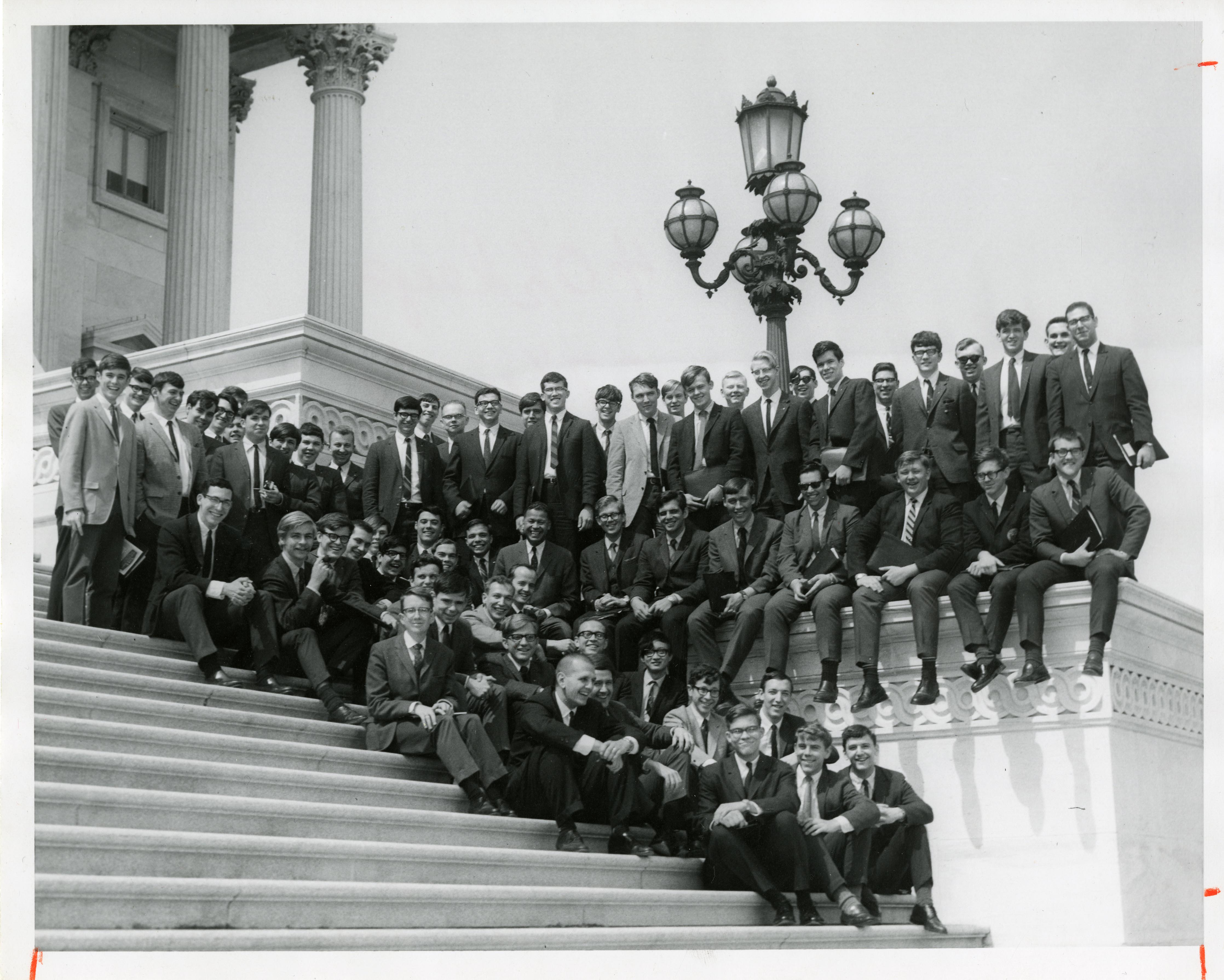
Initially, Grogan says, the thought was to establish an MQP center affiliated with a major corporation. "Imre Zwiebel and I traveled all over looking for a suitable partner," he says. "We visited U.S. Steel in Cleveland, General Electric in Schenectady and Du Pont in Wilmington. We put a great deal of time into this, but we began to see the limitations of a disciplinary center, including the need to have all the students from one or a few disciplines and finding faculty members knowledgeable in the focus area of the projects. It was at one of the General Implementation Committee meetings that we decided the center should be a site for IQPs, instead."
With this change in focus, attention turned briefly to New York City and its financial community, Lutz says. "Then one day, during a meeting in the IQP center, Tom Keil suggested Washington, D.C., as a place that was rich in a whole range of societal and political issues relating to technology, and everyone quickly latched on to that idea. Now, with the passage of time, I may have romanticized what happened next, but I remember having to leave the meeting early and, as a consequence, being chosen to be the center's first director."
Before it welcomed its first students in 1974, the Washington Project Center would need a home and, more important, some projects and project sponsors. Starting with introductions from Massachusetts legislators and from faculty members and alumni who had contacts at a host of federal agencies and national organizations, Lutz, Hagglund, Demetry, Grogan, Mielinski, Keil and others knocked on doors all over the nation's capital and sold the Plan and the project concept.
The success of the Washington Project Center in the late 1970s and early 1980s set the stage for the creation of a global network of project centers and sites. Starting with the establishment of the London Project Center in 1987, the Global Perspective Program has grown to include some 11 centers on four continents.
"Everything was different, so everything was challenged."
Throughout the Plan's history, there has been constant pressure to change the program - from within WPI and from beyond the campus. At times, those forces have combined to force important revisions. A case in point is the Plan's decidedly unconventional grading system. The system was designed, in part, to eliminate the cutthroat competition typical of engineering programs by doing away with such status symbols as grade-point averages, dean's lists and class standing. It also removed much of the disincentive for students to take risks by abolishing the stigma of a failing grade.
While few argued that the system was not beneficial to students, many pointed to problems with its structure, which included just three grades: AC (acceptable), AD (acceptable with distinction) and NR (no record made on a student's transcript). One of the most important problems with the system was the difficulty graduate schools had comparing the academic success of WPI students with that of students from schools with conventional grading systems. This problem proved especially acute among medical schools, which must process huge volumes of applications.
From inside WPI came a different concern. With only two passing grades, it was argued, the system encouraged students who did not believe they could earn an AD in a course to slack off, since the AC grade made no distinction between a good performance and a poor but passable one. But, Keil says, the system sometimes spurred students to work harder. "Some students worked hard in one course to get an AD and improve their transcript," he says, "whereas under a conventional system they might have been content to get all Bs."
Early on, Grogan began advocating for a change to an A-B-C-NR system. "I felt the grading system was one of the few mistakes we made," he says. "It was a compromise between those who wanted a pass/fail system, which would have made it impossible for students to go to graduate school, and those who wanted a conventional system. It was an experiment that was worth trying, but we held on to it for too long."
In 1986, by a vote of the faculty, the A-B-C-NR system Grogan had long sought was approved. For those in the academic world beyond WPI, the change made WPI look a bit more comprehensible, but also a bit more conventional. Says Keil, "In a funny way, having a totally different grading system makes you seem eccentric and reinforces the fact that you are different. So changing the grading system made us seem less eccentric and, therefore, less innovative."
One of the most persistent sources of outside pressure on the Plan has come from the major national body responsible for accrediting engineering programs at colleges and universities, the Accreditation Board for Engineering and Technology or ABET. WPI's first accreditation visit under the Plan came in 1972, just as the Plan was being fully implemented. ABET, anxious to understand and learn from WPI's bold experiment, sent a blue-ribbon panel made up of some of the organization's most experienced and senior evaluators.
"It was a truly positive experience," Lutz says. "The team recognized that the changes we'd made were not only educationally successful, but a real model for engineering education in the country. We ended up with a full six-year accreditation for all our engineering programs."
Subsequent ABET visits were less positive, Lutz says. "ABET didn't send blue-ribbon panels after that first experience. The teams that came to WPI tended to use a more traditional mode of evaluation, which meant challenging everything that was done differently. At WPI, of course, everything was different, so everything was challenged."
Since WPI had no required courses and used the vehicles of required projects and the Competency Exam to determine whether students were learning what they needed to be competent professionals, the ABET visitors frequently had difficulty deciding whether WPI students were meeting the standards ABET had established for earning accredited degrees in civil, chemical, electrical, manufacturing and mechanical engineering. Each visit and each accreditation report brought new pressure to adapt required courses in science, math and engineering - pressure that came with the threat of possible loss of accreditation.
WPI resisted the pressure for more than a decade, but ultimately the prospect of losing the official stamp of approval that comes with accreditation - and the likely impact that loss would have on student enrollment - proved too great a risk. In 1984, the faculty approved a motion that enabled academic departments to adopt distribution requirements.
"Our experience with accreditation is an unfortunate part of the history of the Plan," Keil says. "The pressure exerted by the bean counters really hurt us. I'm still not convinced we fought hard enough. Distribution requirements are not a good measure of competence. Students who pass all the right courses can still be weak links. On the other hand, there were students in the early days of the Plan who did not come close to meeting our current distribution requirements, but who were stunningly good students. What students get on their transcript, course by course, doesn't say a whole lot."
With distribution requirements and the Competency Exam, WPI had, in effect, two competing methods for assuring that students were getting an adequate education. It was only a matter of time before the Comp, perhaps the Plan's most troubled child, came under scrutiny. Plagued by problems, feared by students (though fiercely defended by alumni who survived it), and enjoying only tenuous support from the faculty, the Comp was eliminated for departments that had implemented distribution requirements. (At right is the amazing story of the Competency Examination.)
Jack Boyd, emeritus professor of mechanical engineering and a Planning Committee member, says he believes the move to replace the Competency Exam with distribution requirements was a major blow to the Plan. "The Comp was an extremely effective symbol," he says. "We never really took the time to discuss modifications that might have lowered the exam's anxiety level. When we killed the exam, it broke my heart, for I knew what would follow. We now have the worst possible combination of a traditional engineering program and a flexible program."
"The footnotes are killing us."
In time, every department - even those not subject to ABET accreditation - developed distribution requirements.
The requirements represent the most significant move WPI has made in the direction of a more traditional, rigid curriculum, since the passage of the Plan. Unfortunately, Grogan contends, they also opened the door for departments to move further along that retrograde path.
"Distribution requirements, in the broadest sense, are probably necessary," he says, "but the footnotes are killing us. Some departments keep adding more and more requirements and reining students in further with footnotes that add additional specificity to the requirements. In some cases, departments have more requirements than they did in the days before the Plan. I think the motivation to dictate what is best for students is rooted deep in the soul of educators."
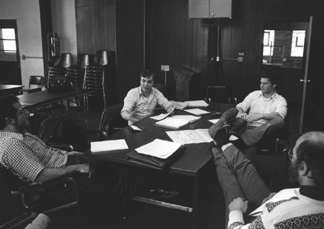
That motivation has sometimes emerged in the form of what Boyd calls a "curriculum in a drawer." At WPI, as at other academic institutions, he says, "there is always a tension between academic freedom and institutional goals. But some people went beyond the pale in developing unpublished curricula that students were urged to take if they wanted to be professionals in certain fields."
During the 1995-96 academic year, the faculty adopted a new curricular element that Grogan and others believe further erodes the flexibility inherent in the Plan and encourages students to give up much of the freedom the Plan offers them to design a course of study that suits their own needs and interests. Called the concentration, it enables students to specialize in a specific subdiscipline of engineering or science by completing two units of work (six courses) in a focused academic area plus an MQP appropriate to the concentration. Examples include aerospace, biomechanics, engineering mechanics and other specialties within mechanical engineering.
"Concentrations go way beyond what was ever intended in the Plan," Grogan says. "They are too specialized for undergraduate work and encourage students to focus all their efforts on areas that may evaporate after they graduate. They also lock up students' time to the point where their ability to go overseas to do projects or to take advantage of other broadening opportunities the Plan provides is impeded. God knows, if there is anything undergraduates need, it's flexibility."
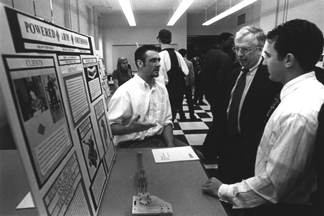
Keil says the institution of concentrations and minors (another new curricular feature adopted by the faculty last year) reflects a change in the outlook of students. He says today's students seem less able to make their own educational choices than did the students of 20 years ago. Students today are also more focused on preparing for their careers. "I think getting a degree is more important than getting an education for today's students," he says. "The 1970s, despite all the ferment, was a period of optimism. People had a lot of faith that things were getting better in a broad sense. That's not true today.
"The job market has changed. Recruiters no longer come here to hire people to fill generic engineering jobs. They want people to be able to perform in their specialties from day one. Plus, our students must now compete for jobs with laid-off engineers, engineers from Eastern Europe and other seasoned professionals. The more credentials students have to demonstrate their skills the better, though I still think the MQP and the IQP are the best evidence students can present of their ability to contribute to a company."
"We can do so much more."
"I think we need to step back and take a look at where we are going here," Grogan says. "When we started the Plan we had a clear idea of what we wanted to accomplish. The changes we've seen over the past 30 years have been to a large extent patchwork fixes made in response to specific problems. There is a need to ask ourselves what philosophical approach we wish to take. We should base that approach on the positive experiences we've had, particularly with the projects, which have been incredible."
It is ironic, Grogan says, that the trend toward increasing specialization and diminishing flexibility is occurring just as the organization that triggered them takes a giant step in the opposite direction. Last year, the governing board of ABET approved a sweeping new set of accreditation criteria that will apply to all engineering programs in the year 2001. In a marked change from the former criteria, which looked primarily at what courses students take (known as process-oriented criteria or bean counting), the new standards attempt to measure what students learn and what skills and qualities they gain (called outcome-oriented criteria).
The new criteria seek to measure many of the qualities that the WPI Plan is designed to engender, including teamwork, problem solving and communication skills, an understanding of the interactions between the work of technological professionals and society, and an inclination to lifelong learning. In fact, WPI's experience with the Plan was largely responsible for its selection as one of two universities nationwide to be evaluated this year under the new criteria as part of a three-year pilot study.
Recognizing the need to capitalize on its nearly three decades of experience with the Plan, and hoping to retain its reputation for innovation, the university this year began a strategic planning process. Taking its charge from WPI President Edward Parrish, who served as chairman of ABET's Engineering Accreditation Board during the formulation of the new criteria, the Strategic Planning Steering Committee and 13 subcommittees evaluated WPI's role as an educational institution.
In its recently released draft report, the Strategic Planning Steering Committee concludes that the Plan has been largely successful and, in fact, has helped transform the university in many positive ways. Still, the report notes, some of the Plan's seminal concepts have never been fully implemented. "We are far from having devolved upon students a major portion of the responsibility for learning, from having implemented a program that responds to individual differences among learners, and from having thoroughly coordinated learning and doing throughout the curriculum."
The committee called on WPI to "reinvigorate the spirit of the Plan" and to build upon its strengths, keeping in mind the changes that are transforming the world - and higher education itself. They noted that one of WPI's most important strengths is that "we have undertaken a major renewal of our community in the recent past. We have a model at hand that assures us that imaginative thinking, cooperative effort and bold action will produce decisive and positive change."
As the process of planning moves forward, Lutz urges WPI to put every element of the Plan under the microscope. "These are all powerful components of a solid educational experience, but they will remain that way only if the faculty calls them into question," he says.
"There will always be the fear that you could be setting the stage for going backward and losing what WPI has achieved with the Plan. But the flip side of that is if you are going to move forward and change for the better, you have to be willing to take that risk. If you are not, you are going to become stale as an institution. The central element of why WPI is such a great institution is that the faculty was willing to reflect on what education is supposed to accomplish and then to do something about it. The faculty need to assure themselves and the rest of the educational community that they are perfectly willing to do that again. Otherwise, the distinction WPI has enjoyed will disappear."
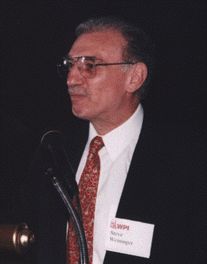
Echoes Boyd, "We live in an era of technology, and there is a tremendous need to educate technologists who are more sensitive to the consequences of technology. WPI has more experience in evolving a program that meets this goal than any institution I know. We need to take another look at the Plan. For reasons that I can't take any credit for, it was way ahead of its time. It remains very solid today. I might design the structure a little differently now, but it would still have the same goals, the same criteria. We've done some very impressive things, but we can do so much more. This is the right time to set out on a journey to see where we can go with the Plan."
Stephen Weininger, professor of chemistry and a member of the original Planning Committee, now chairs the Strategic Planning Steering Committee. He says he believes the process of developing a new strategic plan for the university may, in fact, result in an evaluation of WPI that goes just as deep - and whose results may prove just as profound - as the process that produced the Plan.
"I haven't felt the kind of excitement and anticipation I'm sensing now around campus since those heady days when the Plan was created," Weininger says. "There is a real feeling that we have the chance to redefine WPI's purpose and mission. We have the opportunity to build on what has made WPI a great institution now for more than 130 years, and to set a new course just as bold and as original as the one we established in 1970. It will be interesting to see where that course takes us."
